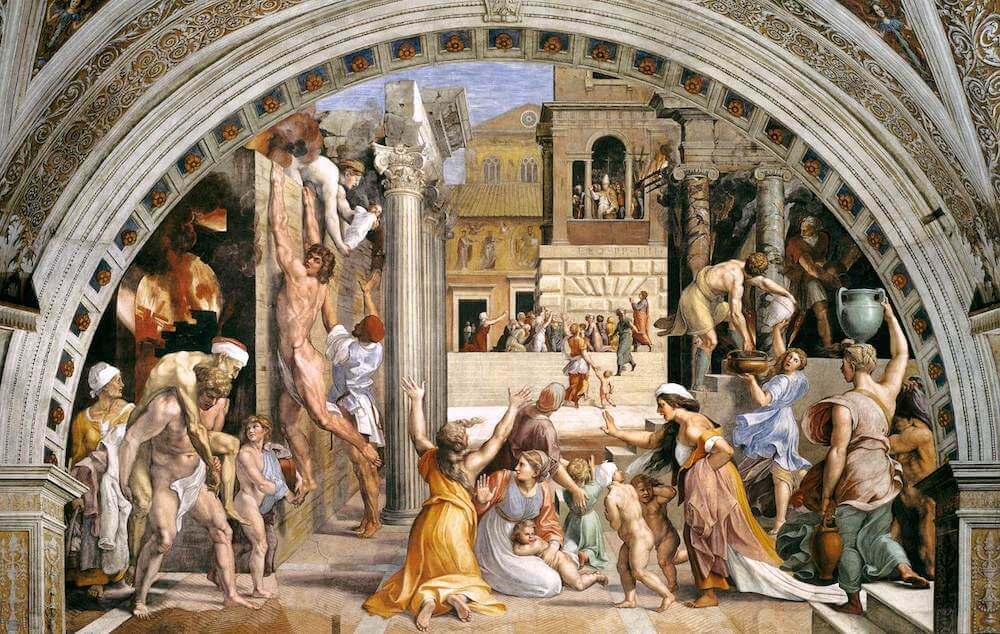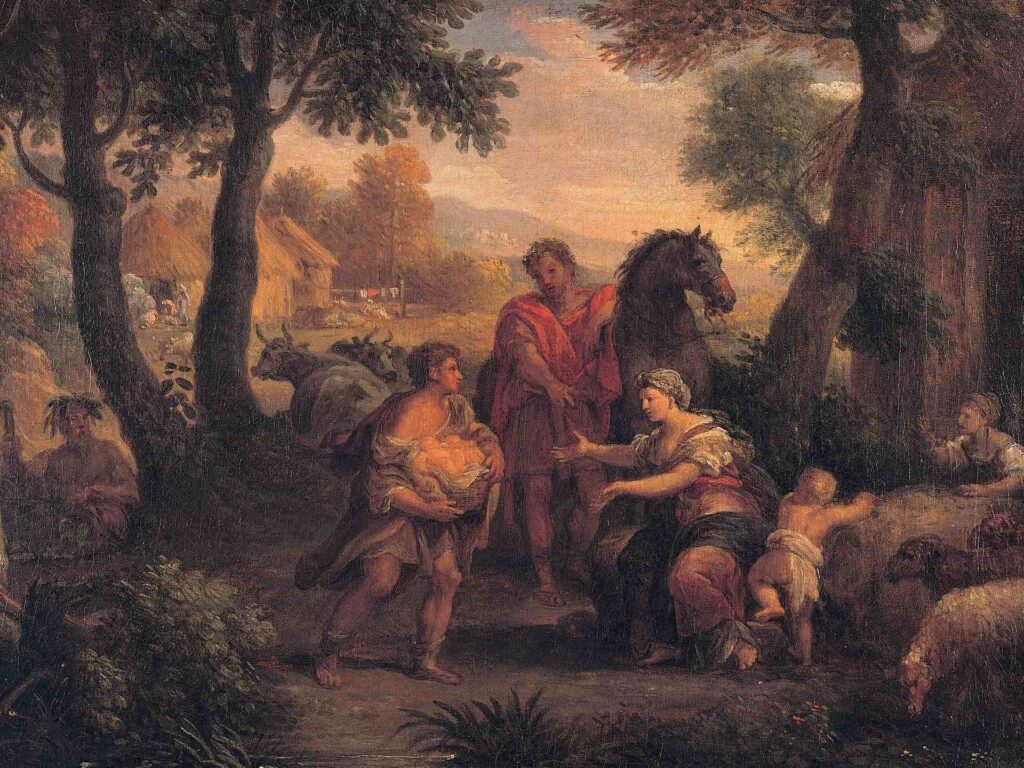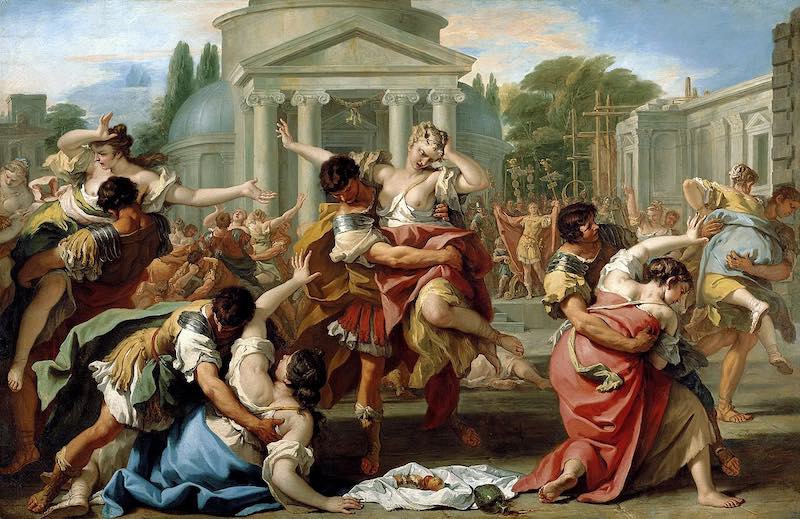
GUIDED TOURFrom €65.00
The Original Tipsy Tour
When you visit Rome during the derby between its two major football teams, A.S. Roma and S.S. Lazio, you will quickly realize how intense the city’s rivalries can be. The match is seen by many as one of the fiercest derbies in football worldwide, where tensions escalate in the lead-up to the game, prompting heavy police presence to prevent violence.
While sports rivalries are common, the one in Rome has a unique depth. To understand it better, one can look to the foundation myth of the city: the story of Romulus and Remus, where one twin kills the other merely for crossing a boundary.
Rome’s Trojan Origins
The tale of Romulus and Remus dates back over 3,000 years, long before the legendary founding of Rome in 753 BC and further back to the ancient city of Troy.
It all started with a Trojan prince named Paris who abducted Queen Helen of Sparta, having been promised her as a reward in a beauty contest among the Olympian Gods. This act sparked the famous Trojan War, a conflict in which the Greeks attacked Troy, located on the modern-day Turkish coast, to reclaim her.
For ten years, the Greeks were unable to penetrate the city until a clever warrior named Odysseus suggested building a massive wooden horse. The Greeks left the horse outside the city walls as a deceptive peace offering, hiding their best warriors inside.
As history tells us, the Trojans took the horse inside their city; its occupants opened the gates, and the Greeks assaulted the city, slaughtering everyone inside. In the fray, Paris killed the fabled warrior Achilles, only to be killed himself. Odysseus spent ten years trying to return home to his family, and Helen returned to Sparta without a hint of awkwardness.
But what does this have to do with Romulus and Remus?
One of the few Trojans to escape Troy was Aeneas, a warrior who fled carrying his elderly father and infant son. His journey to Carthage and ultimately Italy is chronicled in The Aeneid, a text commissioned by Emperor Augustus from the poet Virgil in the first century BC.

Aeneas settled in Latium (modern-day Lazio) and fathered many children with a woman named Lavinia. One of his many descendants included Rhea Silvia, the daughter of King Numitor of Alba Longa and the future mother of Romulus and Remus.
However, trouble arose when her uncle Amulius seized the throne, usurping Numitor’s position and forcing Rhea to become a Vestal Virgin—ensuring she could not have children who might claim a right to the throne. Yet, despite Amulius’s cunning plans, the bold Roman gods had other ideas.
Divine Intervention in the Story of Romulus and Remus
The Greco-Roman gods were notoriously fickle and often intervened in the lives of mortals, especially young women. Jupiter (known as Zeus in Greek mythology) was particularly notorious for his adventures. For instance, he transformed himself into a swan to approach a Spartan queen named Leda, which raises some intriguing questions about ancient Greek royalty.

After her encounter with Jupiter in swan form, Leda gave birth to twins Castor and Pollux and daughters Clytemnestra and Helen of Sparta. If these children resembled their father, one can only wonder what their family reunions were like.
Now, back to the story of Romulus and Remus. The myth says that Rhea Silvia was approached by Mars, the God of War, one night, and became pregnant with twins. This left Rhea in a difficult position, as Vestal Virgins who broke their vows faced dire consequences. Nevertheless, the people of Alba Longa, fearing Mars’s wrath, decided against executing her and instead imprisoned her.
Shortly after giving birth, King Amulius ordered the twins to be killed, but the servant tasked with this pitying act set them adrift on the River Tiber instead. When the river overflowed, the twins were marooned on the banks, but fate smiled upon them as a she-wolf (lupa in Latin) came to their aid, nurturing them until they grew strong.
This popular version of the myth creates an interesting nuance. The Latin word lupa also means prostitute, which adds a layer of complexity for consideration: Did they find refuge with a she-wolf or a member of the world’s oldest profession?

Eventually, Romulus and Remus were raised by the shepherd Faustulus, quickly making a name for themselves due to their strength and leadership. They recruited followers among fellow shepherds and outcasts from the area. Upon returning to Alba Longa, they got caught up in a conflict between supporters of Numitor and Amulius, leading to Remus’s capture.
While both their grandfather and Amulius suspected Remus’s true identity, Romulus organized a plan to rescue him. They uncovered their past and learned of their mother’s tragic suicide by drowning in the Tiber, ultimately combining forces with their grandfather to restore him to power. Amulius was killed, and Numitor regained his throne.
However, the twins were not willing to settle down in Alba Longa. They envisioned the founding of a city where they could rule and create a lasting legacy.
A Rivalry that Shaped Rome
The twins’ united vision soon developed into a rivalry. Each wanted to establish their city, but they disagreed on its location. Romulus favored building on the Palatine Hill, while Remus preferred the Aventine Hill. To resolve their dispute, they sought divine guidance. They decided to watch for signs in the sky from their respective hills, believing that the gods would direct them through the flight of birds.
Remus saw six vultures circling the sky first and thought he had won. However, just moments later, Romulus spotted twelve vultures above Palatine Hill, believing the gods favored him. Excited, Romulus began marking the city’s boundary on his chosen hill.
Unwilling to yield, Remus mocked Romulus, even leaping over the low wall Romulus built as a challenge. This act was not just a mockery; it was a violation of the sacred space that Romulus was creating, which demanded a response.
Romulus Establishes Rome through Fratricide
In a fit of rage, Romulus killed Remus on the spot, becoming the city’s sole founder and naming it Rome after himself. This would grow into one of history’s greatest empires, yet its origins were forever stained by this act of fratricide—a grim reminder that even the most significant accomplishments can be born from violence and sorrow.
How did this small settlement by the Tiber transform into the ancient world’s most powerful civilization? Initially, King Romulus lacked a populace to govern. Allegedly, he invited neighboring tribes to a point between the two peaks of Capitoline Hill known as the Asylum (where being savage had its benefits).
Romulus declared that anyone who arrived at the Asylum would be granted citizenship, no questions asked. Unfortunately, this invitation did not attract farmers and families, leading to the city’s first inhabitants likely being convicts, bandits, and runaway slaves—hardly your traditional invitee to dinner. Nonetheless, these individuals were loyal, brave, and ambitious. Sometimes, having nothing to lose becomes the ultimate key to success.
However, every inhabitant in Rome was male, which posed a significant issue. For the city’s growth, they needed women. Romulus requested intermarriage rights from neighboring tribes, but they flatly refused. Frustrated, Romulus devised a clever plan: he organized a grand festival on what would become the Circus Maximus and invited the neighboring Sabine tribe. Once everyone had imbibed generously, Romulus signaled for the Roman men to kidnap the Sabine women. This event, known as the “Rape of the Sabine Women,” was later documented by Plutarch and has inspired countless artistic representations.

Although this act sparked significant conflict between the Romans and the Sabines, the women ultimately intervened, promoting peace between their new husbands and their families. “We are wives now and mothers,” they reportedly pleaded, “do not leave us widows and our children without parents.” Thus, ancient Rome was born, destined to conquer the Mediterranean world. But that is a narrative for another day.
Romulus and Remus as Reflections of Rome’s Civil Strife
This leads to the most intriguing part.
The stories from antiquity, like those of The Trojan War or various Old Testament tales, formed part of an extensive oral tradition only documented later on. The ‘fixed’ version of Romulus and Remus we have comes from the first century BC, written in Ab Urbe Condita (From the Founding of the City) by the historian Titus Livy.
However, many variations of the Romulus and Remus story existed, not all portraying Romulus as a fratricide. In the Historic Library of Diodorus Siculus (50s BC), Remus saw no birds from his vantage on Aventine Hill and was later killed by Celer, Romulus’ servant. Notably, in his 5th-century CE work City of God, Saint Augustine mentions in passing that Remus survived the founding of Rome.
So when did the version that accused Romulus of murdering his twin arise? Livy wrote under the patronage of Rome’s first emperor Augustus (31 BC – 14 CE), who rose to power after over a century of continuous civil war. Augustus faced the task of persuading Romans with a proud republican heritage to accept his autocratic rule.
Augustus leveraged the context of a war-weary Rome emerging from turmoil, portraying himself as a savior, ushering in a Golden Age of peace. To cement this image, it helped to emphasize the Romans’ propensity for civil strife, suggesting it was ingrained in their nature. Citing their founder’s fratricide further reinforced this narrative of civil war.
Discover More Stories on Our Rome Tipsy Tour
The story of Romulus and Remus is just one of many we share on our famed Tipsy Tour of Rome. This unique tour combines the best parts of travel: meeting like-minded people, tasting traditional drinks, and uncovering the juicy stories behind the places you visit! Voted as one of Rome’s best experiences, don’t take our word for it, see what our guests have to say!

Alexander Meddings is a professional copywriter with a postgraduate degree in Roman history from the University of Oxford. After completing his MPhil, he moved to Florence and then Rome to conduct his research and pursue his passion for history at its source. Currently, he works in travel as a writer and content consultant while also serving as a university lecturer and translator.





